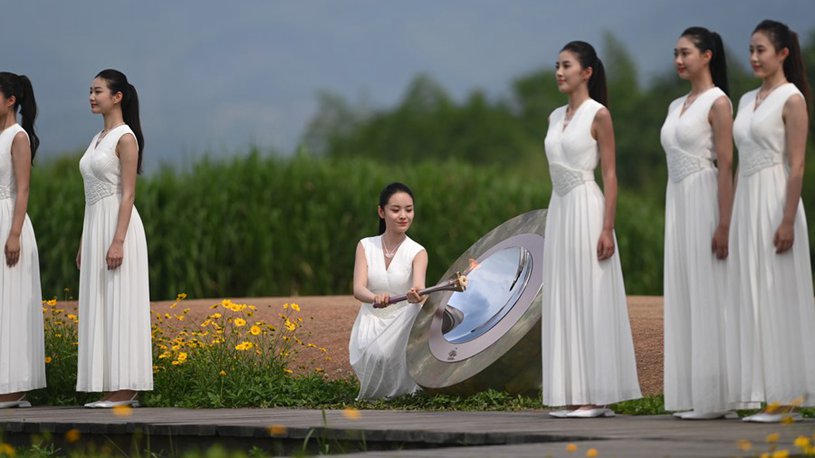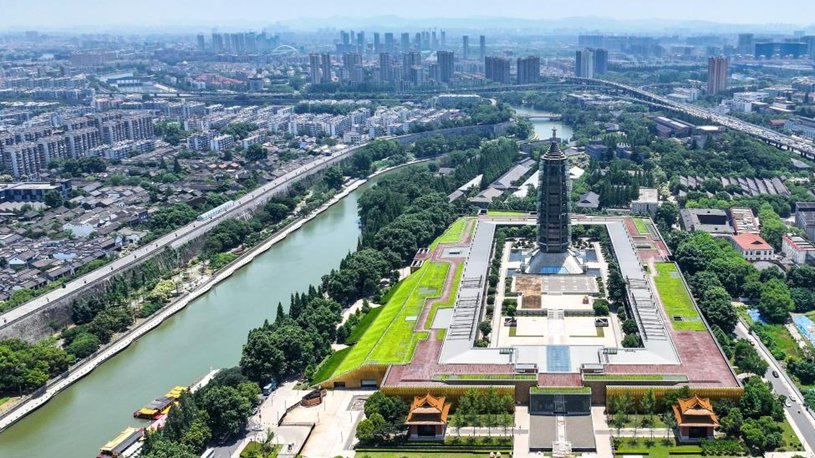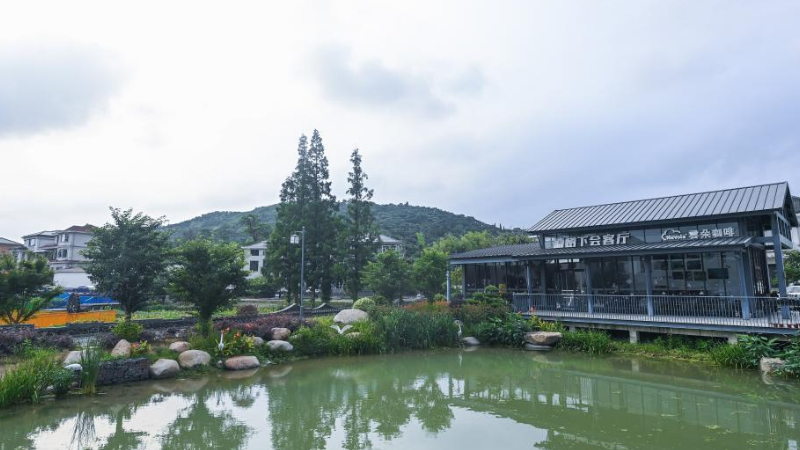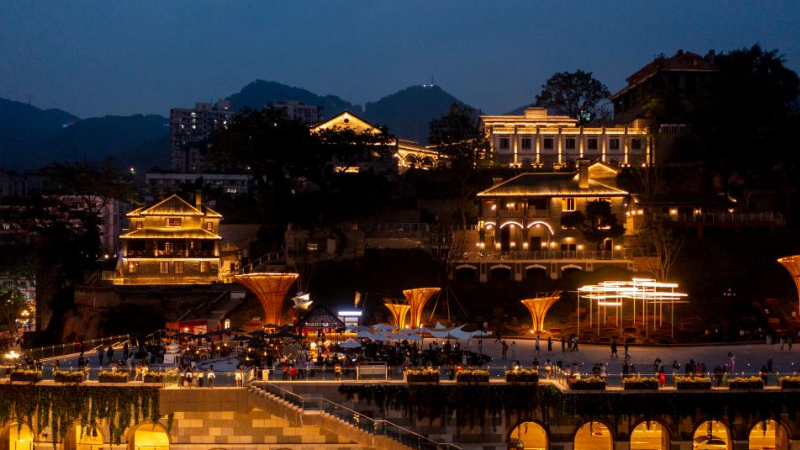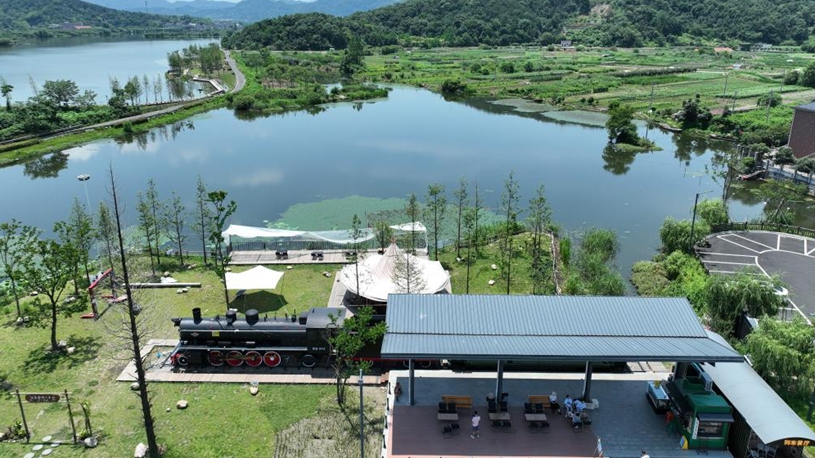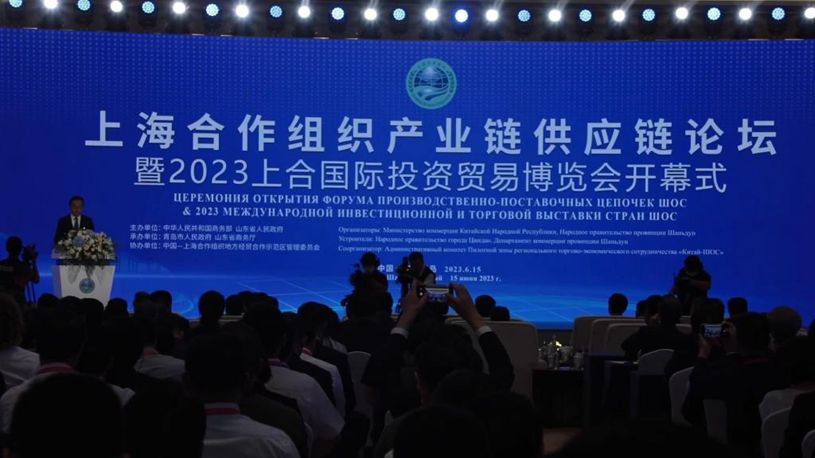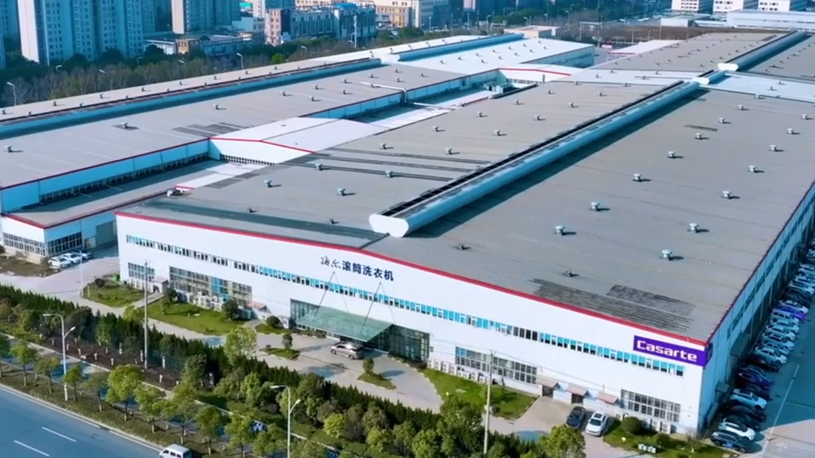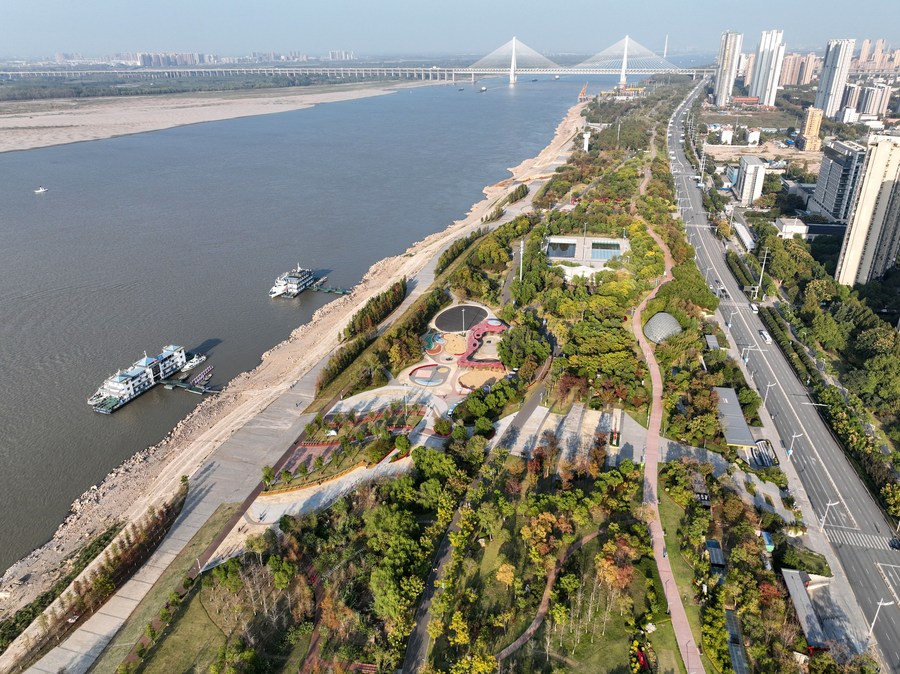
This aerial photo taken on Oct. 31, 2022 shows the Qingshan Park in Wuhan, central China's Hubei Province. (Xinhua/Cheng Min)
WUHAN, June 16 (Xinhua) -- Retired ironworker Hu Sheng was seven years old when he first set foot in Wuhan.
"We had so much fun on the Daijia Lake, where we rowed boats, swam and caught fish and shrimps," said Hu, who moved to the river town, today's capital of central China's Hubei Province, in 1957 with his parents, grandmother and three younger brothers.
His father, an engineer, helped lay tracks for what was to become one of New China's first steel production giants, Wuhan Iron and Steel (Group) Corp., which began producing iron in 1958.
"When iron started rolling out of the company's No. 1 blast furnace, China's leader Mao Zedong was there to witness the historic moment," said Hu. "My father was in a crowd of 3,000 people cheering and applauding."
Qingshan District, where the company is located, rapidly evolved into Wuhan's industrial hub with 12 giant state companies serving as pillars of China's modern industries.
But the industrial boom came at heavy environmental costs. Over the decades, wharves and industrial waste dumps invaded the once-beautiful Yangtze River shoreline. Roads on the riverbank were damaged due to the movement of heavy-duty trucks and the river water was contaminated by industrial discharges.
When Hu himself became an ironworker in the 1970s, his favorite lake had become part of a new thermal power plant and its clear water turned gray with discharges of coal ash. "The lake disappeared altogether in the 1990s and a dark coal mound emerged," Hu said.
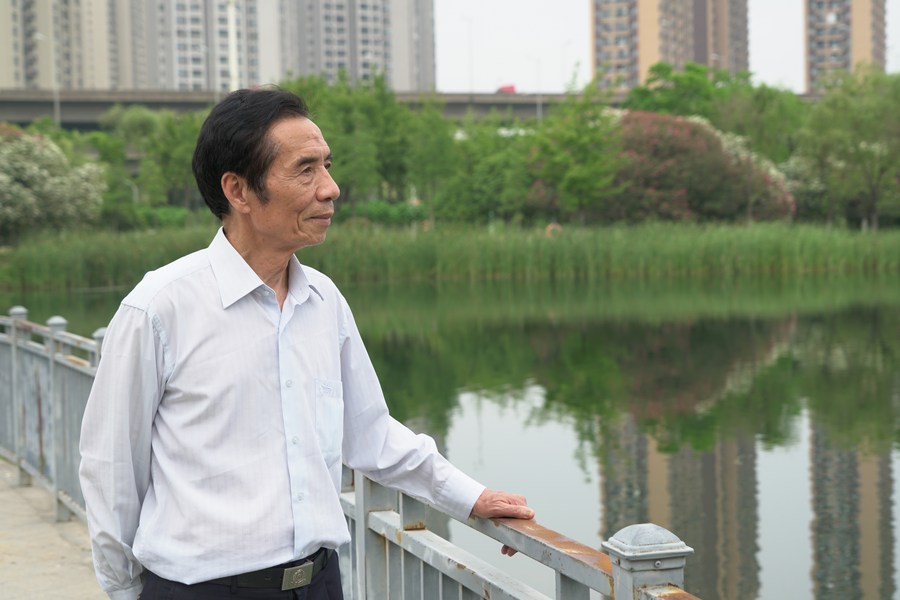
Retired ironworker Hu Sheng stops as he walks at the Park of Daijia Lake in Wuhan, central China's Hubei Province, June 7, 2023. (Xinhua/Wan Pengqi)
Thanks to the rise of the circular economy in 2002, businesses started to look for new construction materials and make bricks out of coal ash. The mound at the site of the former lake has proven to be a treasure trove for enthusiastic excavators and astute investors.
BUILDING AN ECO-CITY
The restoration of Daijia Lake started in 2013 amid the local government's proactive measures to address environmental damage and foster sustainable approaches to development.
Within 16 months, all the coal ash was removed and the lake was refilled with water, with trees and meadows thriving in the surrounding areas. The Park of Daijia Lake and the adjacent Qingshan Park are now regarded as a pair of green lungs for Wuhan.
The former heavy industrial base in Qingshan District also underwent a transformation, with 23 docks demolished or relocated and 3 billion yuan (about 418 million U.S. dollars) of investment injected into ecological renovation projects on the riverfront.
Starting in 2021, Qingshan District started an intelligent transformation of its traditional industries, marking another major step towards building an eco-city.
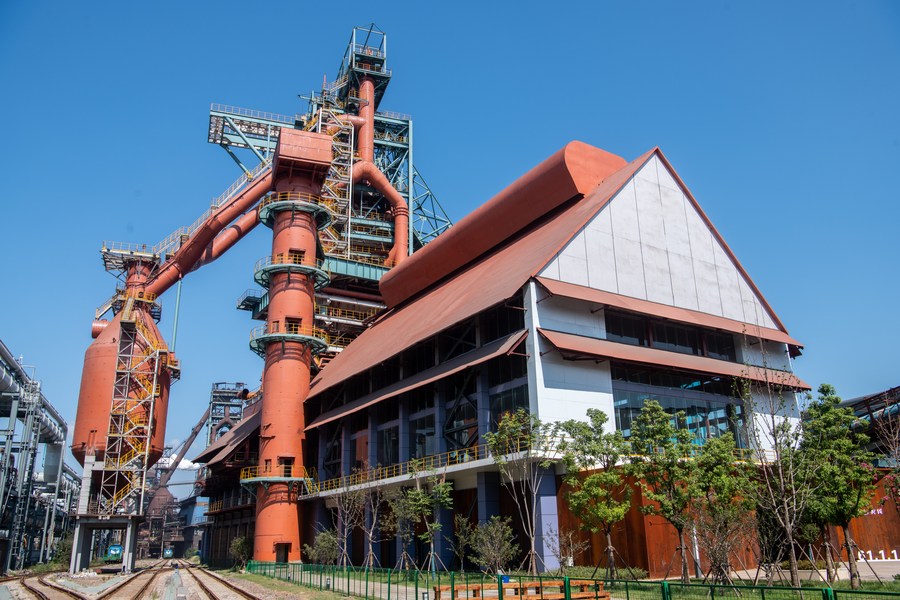
This photo taken on Sept. 14, 2022 shows a view of the No. 1 blast furnace of Wuhan Iron and Steel (Group) Corp. in Wuhan, central China's Hubei Province. (Xinhua/Wu Zhizun)
Today, workers at Wuhan Iron and Steel (Group) Corp. can carry out most of the production tasks with the click of a mouse in a control room away from the production line. "Gone are the days when steelworkers toiled on the production line, soaked with sweat and dust," said Shi Li, who joined the company in 2003.
The landmark No. 1 blast furnace was shut down in 2019 and an industrial heritage park at its site opened to the public earlier this year.
"The blast furnace produced 54.26 million tonnes of crude iron in six decades, averaging more than 2,000 tonnes a day," said Xiao Jing, a former ironworker and now a guide at an exhibition hall in the heritage park who introduces the city's glorious past to visitors.
Wuhan boasts about 162,000 hectares of wetlands, accounting for 18.9 percent of its total area. It was accredited as an international wetland city by the Ramsar Convention in the COP14 meeting hosted here last year.
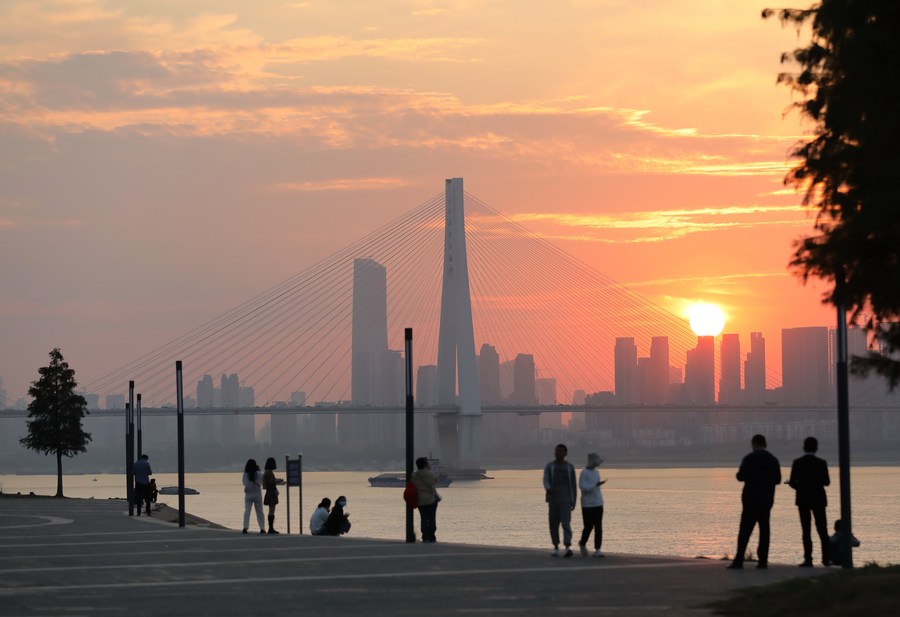
People enjoy the sunset view at the Qingshan riverside park in Qingshan District of Wuhan, central China's Hubei Province, Nov. 8, 2022. (Xinhua/Yao Qilin)■

